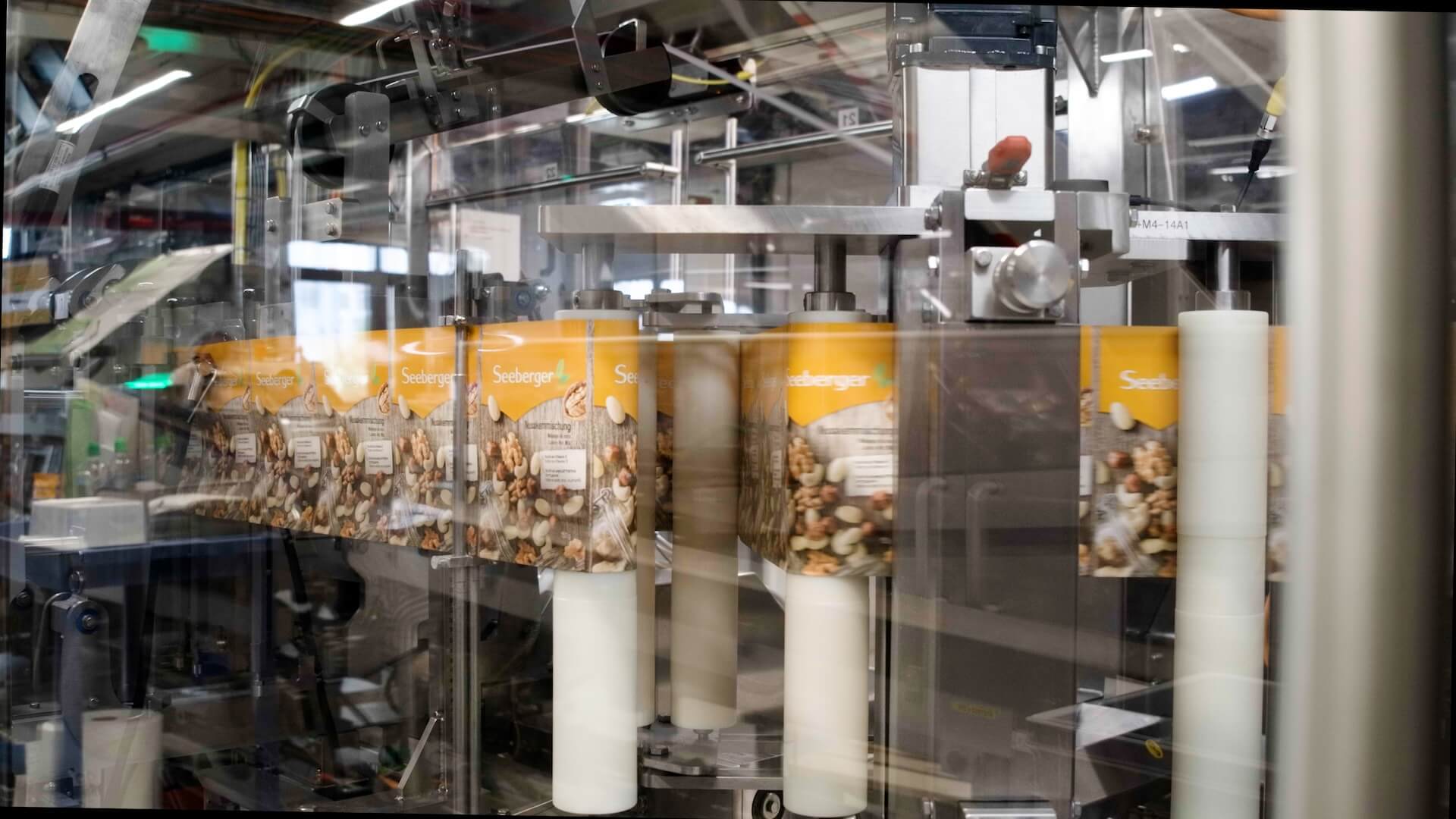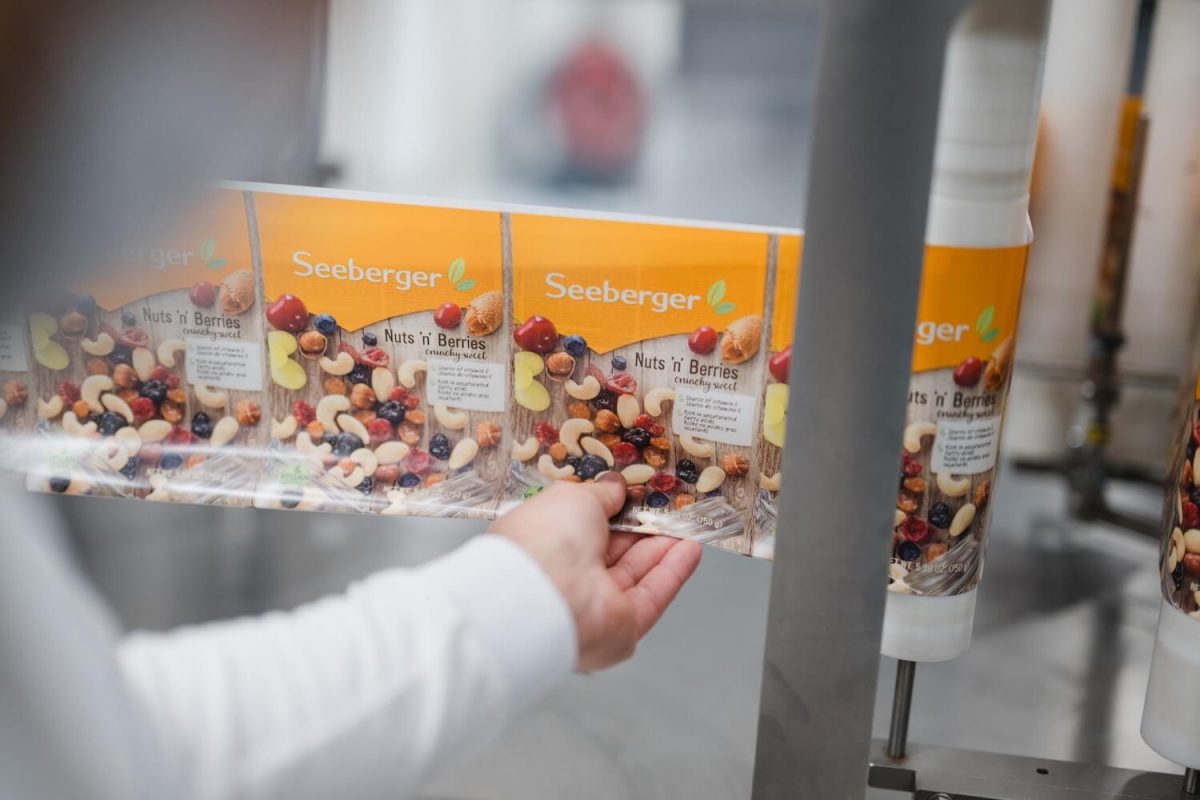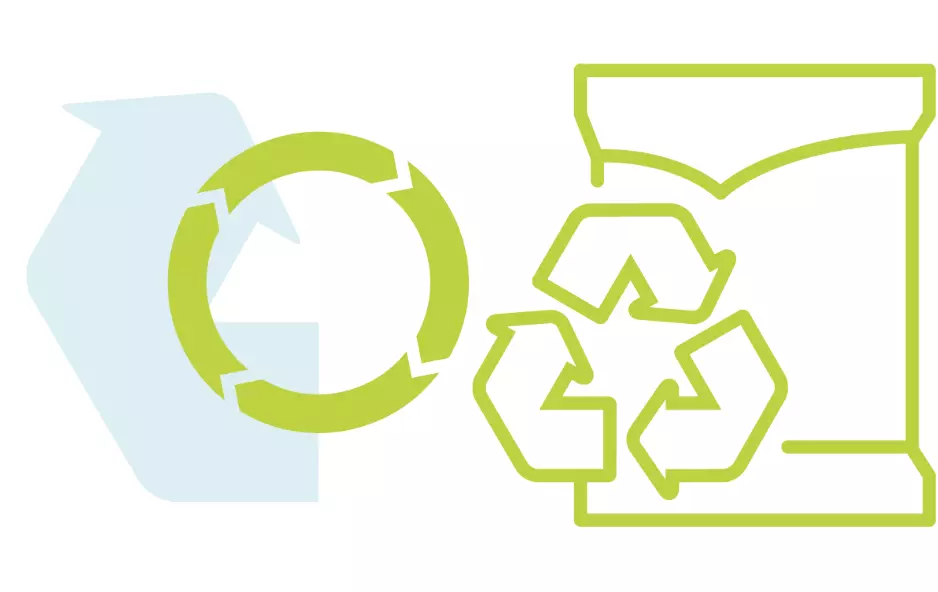Unique packaging for unique flavour
People grow nuts, fruits and coffee of the best quality for Seeberger in over 60 countries worldwide. They are often only harvested once a year. We have to ensure consistent protection during transport and processing to preserve the original aromas of the sensitive products. Our special packaging not only protects against light and oxygen, but also preserves the unique flavour. And so much more: it also minimises food waste, thereby valuing the work of all those striving to grow the raw materials for our products.
Materials for the best possible protection
Replace plastic with glass or paper and you’ve got sustainable, resource-efficient packaging, right? Unfortunately, it’s just not that simple. Glass production requires a lot of energy, transport causes higher CO2 emissions due to the weight and a lid has to be recycled separately. Then there’s the question of the deposit system. What about paper? A challenge in terms of strength and impermeability. Biodegradable films made from maize or sugar cane? A great idea, but it's at the expense of agricultural land and doesn’t offer the right protective properties yet. Our products all have individual requirements with regard to hygiene, shelf life, light protection and oxygen permeability. Alternative packaging options aren’t able to meet these needs for any of our products at the moment.
Monocomposite film – a step in the right direction
Our approach: monocomposite films. Monocomposite films aren’t just packaging, they’re a statement. In contrast to conventional composite films made from different materials, monocomposite films are produced from several layers of one material. This makes recycling more efficient. In addition, the generated secondary raw materials can be returned to the cycle and can be used again in the form of recyclates.
However, we also know that the system isn’t working perfectly yet: many sorting plants don’t identify recyclable material reliably yet. It’s important to us to keep improving our recycling practices and to contribute actively to a more sustainable packaging solution. For instance, 94 % of our flat bag packaging is already made from recyclable monocomposite film, which we primarily procure from Germany and Austria. Thanks to our continual optimisation measures, we’re reducing material use and thus the need for crude oil. Each small step brings us closer to our goal of closing cycles.
Recyclates – a life after use
What is a recyclate? Very simply: it’s plastic that has already been used once and can be reused thanks to recycling processes. An approach that ties in with our vision of a closed cycle. Since autumn 2021, we’ve been using films with a 30 % recyclate content for fifteen Nut & Fruit products. A symbol on the back of the packaging makes this visible to everyone. By using recyclates, we’re saving valuable resources.
Mass balance: the principle of mixed plastic
We procure our packaging material according to the so-called “mass balance”. It works like green energy: if you choose green energy and sign a corresponding agreement with a supplier, you still get power from different sources from your sockets just like everyone else. But by buying green energy, you’re supporting the production of renewable energies. Similarly, we’ve signed a contract for recyclates with our suppliers, but in practice get a mix of recycled materials and new materials, thereby increasing the demand for recycled material.



